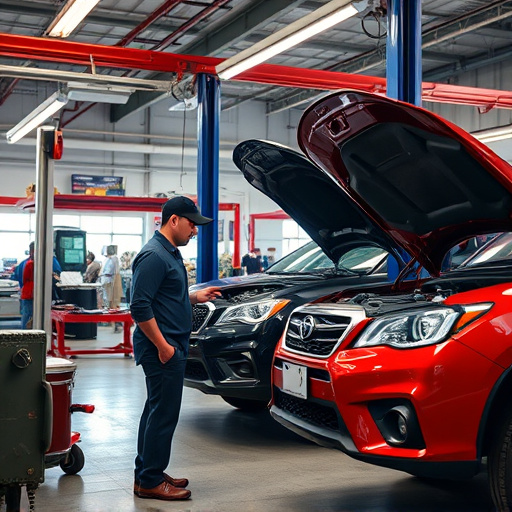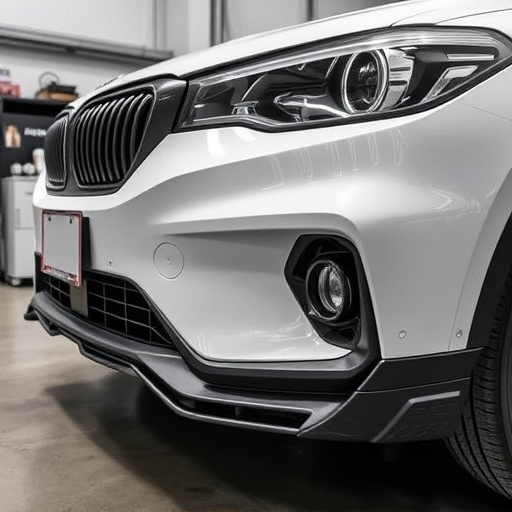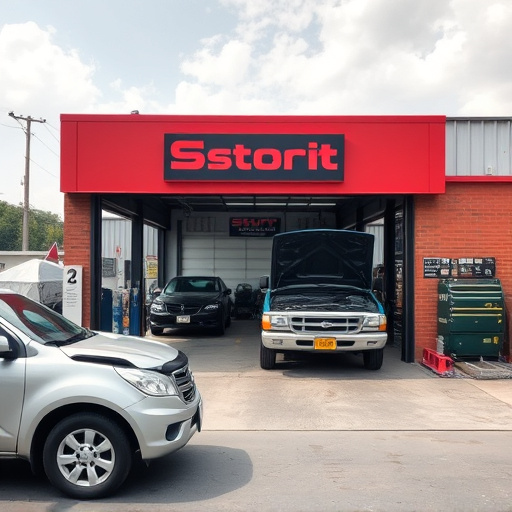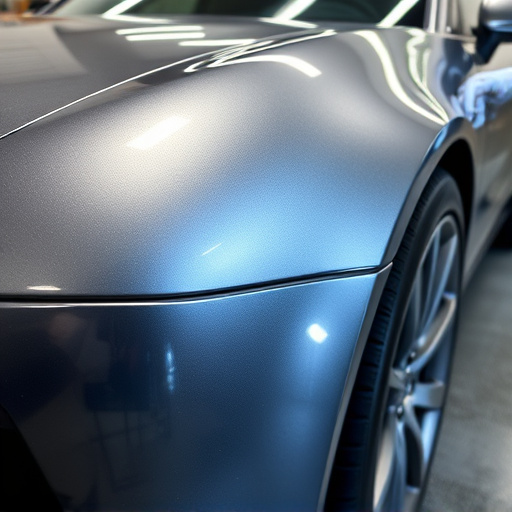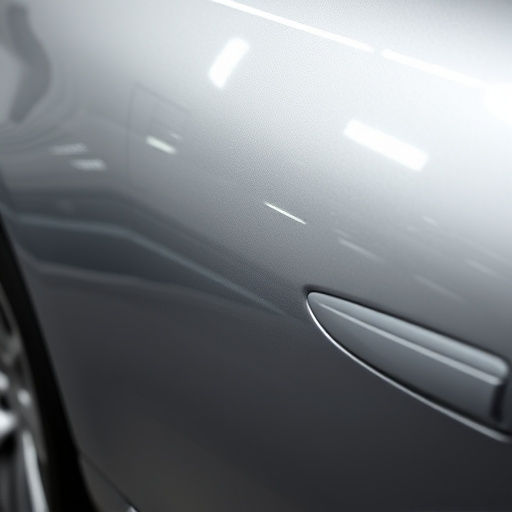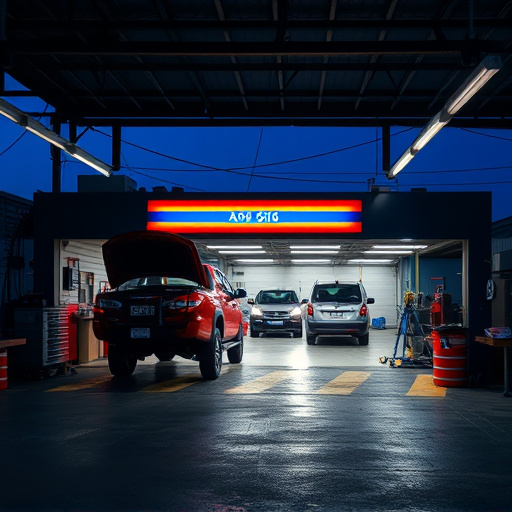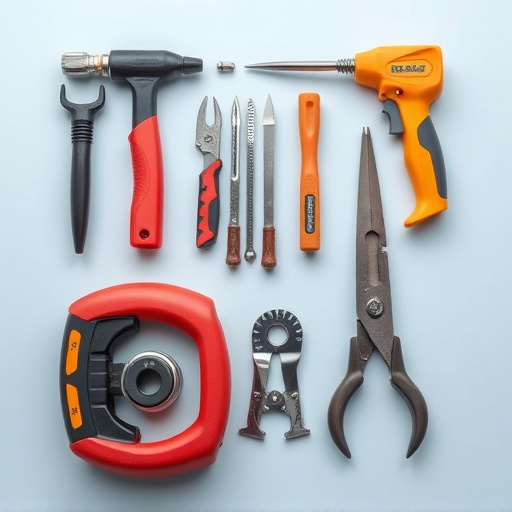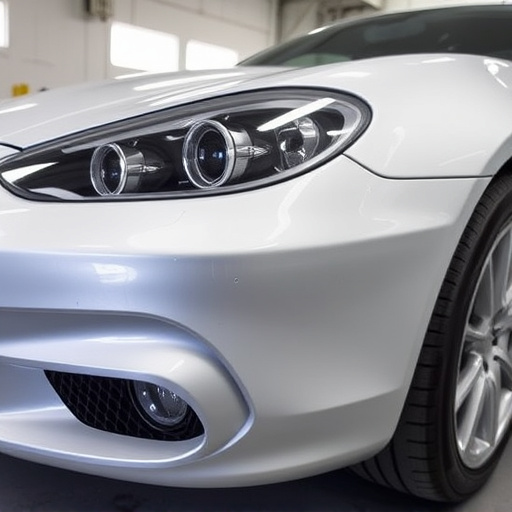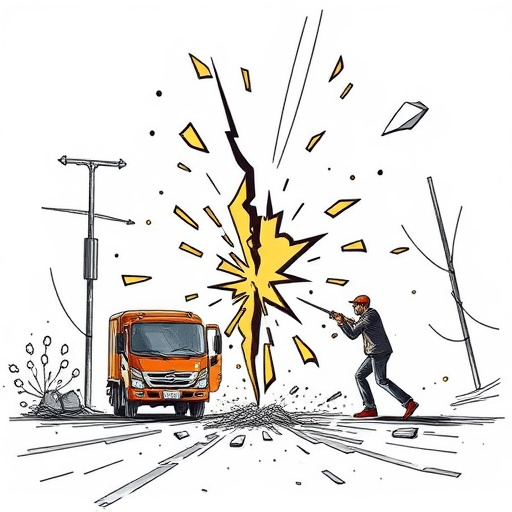For severe vehicle exterior damage, full panel replacement is a necessary and cost-effective solution. It involves complete rebuilding of body panels, ensuring both aesthetic restoration and structural integrity. Key factors in deciding between auto body repair and full panel replacement include costs and time constraints. While initial repairs may seem cheaper, hidden expenses and future issues could arise. Full panel replacement guarantees precise restoration, eliminating risks of hidden damage, and providing long-term peace of mind with high-quality components. It offers a seamless, like-new appearance for damaged vehicles, benefitting older or high-mileage cars by maintaining value and resale potential.
When is it time to go beyond repairs and consider a full panel replacement for your vehicle? This comprehensive guide explores the decision-making process, delving into the pros and cons of this essential automotive service. We’ll navigate the factors that make full panel replacement a worthy investment, from understanding the procedure to evaluating costs and longevity. By the end, you’ll be equipped to make an informed choice tailored to your needs.
- Understanding Full Panel Replacement: When Is It Necessary?
- Evaluating Repair Options: Costs, Time, and Longevity
- Benefits of a Full Panel Replace: A Comprehensive Look
Understanding Full Panel Replacement: When Is It Necessary?

Understanding Full Panel Replacement: When Is It Necessary?
In many cases, a vehicle’s exterior panel can sustain significant damage due to accidents, hail storms, or other impacts. While minor dents and dings might be suitable for repair, more extensive damage often requires a full panel replacement. This involves the complete removal and rebuilding of a vehicle’s body panel, rather than simply filling in cracks or smoothing out bumps. Full panel replacement is particularly necessary when the original panel has been severely deformed, corroded, or if there are structural integrity issues that cannot be adequately addressed through standard dent repair or car paint services.
For example, a cracked or bent door panel that distorts the overall shape of the vehicle may need to be replaced entirely. Similarly, a badly damaged fender or bumper, which serves as part of the vehicle’s safety system, should be replaced rather than repaired. Vehicle body repair professionals skilled in full panel replacement can ensure that not only does the car look its best, but it also retains its structural integrity and safety features, providing peace of mind for drivers and passengers alike.
Evaluating Repair Options: Costs, Time, and Longevity

When considering whether to opt for a full panel replacement or choose auto body repair methods, evaluating costs is a significant factor. While repairing damages might seem like an economical option, especially for smaller issues, it can sometimes result in hidden expenses. The initial cost of auto body repairs may be lower, but if the repair work isn’t thorough or uses subpar materials, it could lead to future problems and additional financial strain. Full panel replacement, on the other hand, offers a comprehensive solution, ensuring that every part is replaced with new, high-quality components. This approach eliminates the risk of hidden damage and provides long-term peace of mind.
Time is another critical consideration. Simple auto body repairs can often be completed swiftly, allowing you to get back on the road in no time. However, complex repairs or those involving multiple panels might require more extensive preparation, labor, and waiting times. Full panel replacement typically involves a longer process as it necessitates disassembling and reassembling various car parts. Yet, it guarantees a more precise restoration, ensuring that every detail is addressed, which can be crucial for maintaining the vehicle’s structural integrity and aesthetic appeal.
Benefits of a Full Panel Replace: A Comprehensive Look
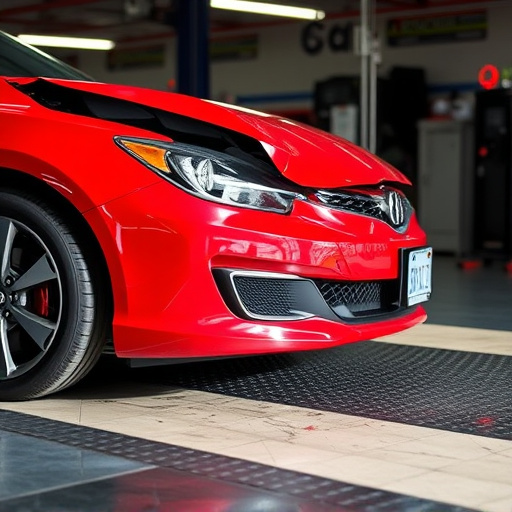
A full panel replacement offers several significant advantages over traditional repair methods, especially for damaged vehicles that have suffered extensive paneling issues. One of the key benefits is achieving a seamless and like-new appearance. Unlike patchy repairs or visible signs of previous work, a complete panel swap ensures all dents, dings, and deformities are eliminated, providing a flawless finish. This meticulous process involves replacing every panel, from the roof to the doors, ensuring no imperfections remain.
Additionally, opting for a full panel replacement can be more cost-effective in the long run, particularly for older or high-mileage vehicles. While initial expenses may seem higher than specialized bumper repair or fleet repair services, this option prevents the need for frequent touch-ups and minor repairs. Mercedes Benz collision repair experts emphasize that a comprehensive approach like this not only restores the vehicle’s aesthetics but also maintains its overall value, ensuring better resale potential compared to vehicles with visible damage or patchy fixes.
In evaluating whether to repair or replace a damaged roof, it’s clear that full panel replacement offers significant advantages in terms of longevity, cost-effectiveness, and aesthetic appeal. While repairs can extend the life of existing panels, they may not provide a permanent solution, and frequent maintenance can become costly over time. Full panel replacement ensures a robust, modern roof that enhances property value and protects against future damage. Therefore, for both practical and financial reasons, full panel replacement is often the preferred choice when considering extensive roof repairs.

